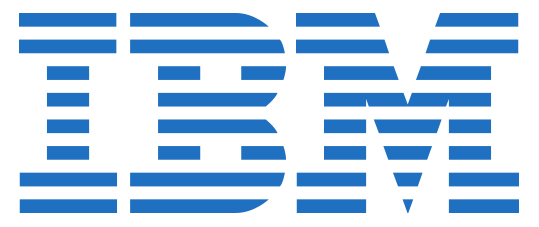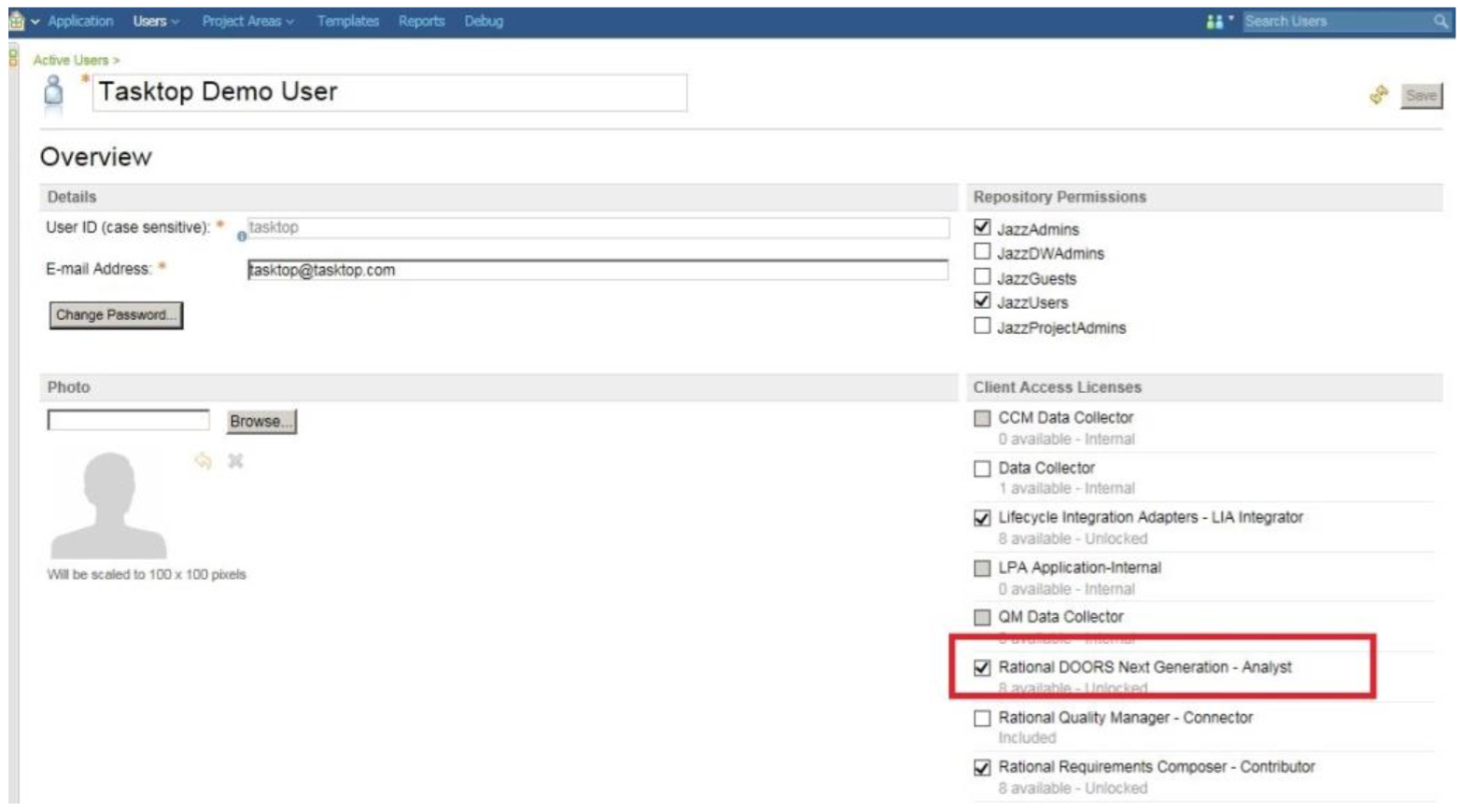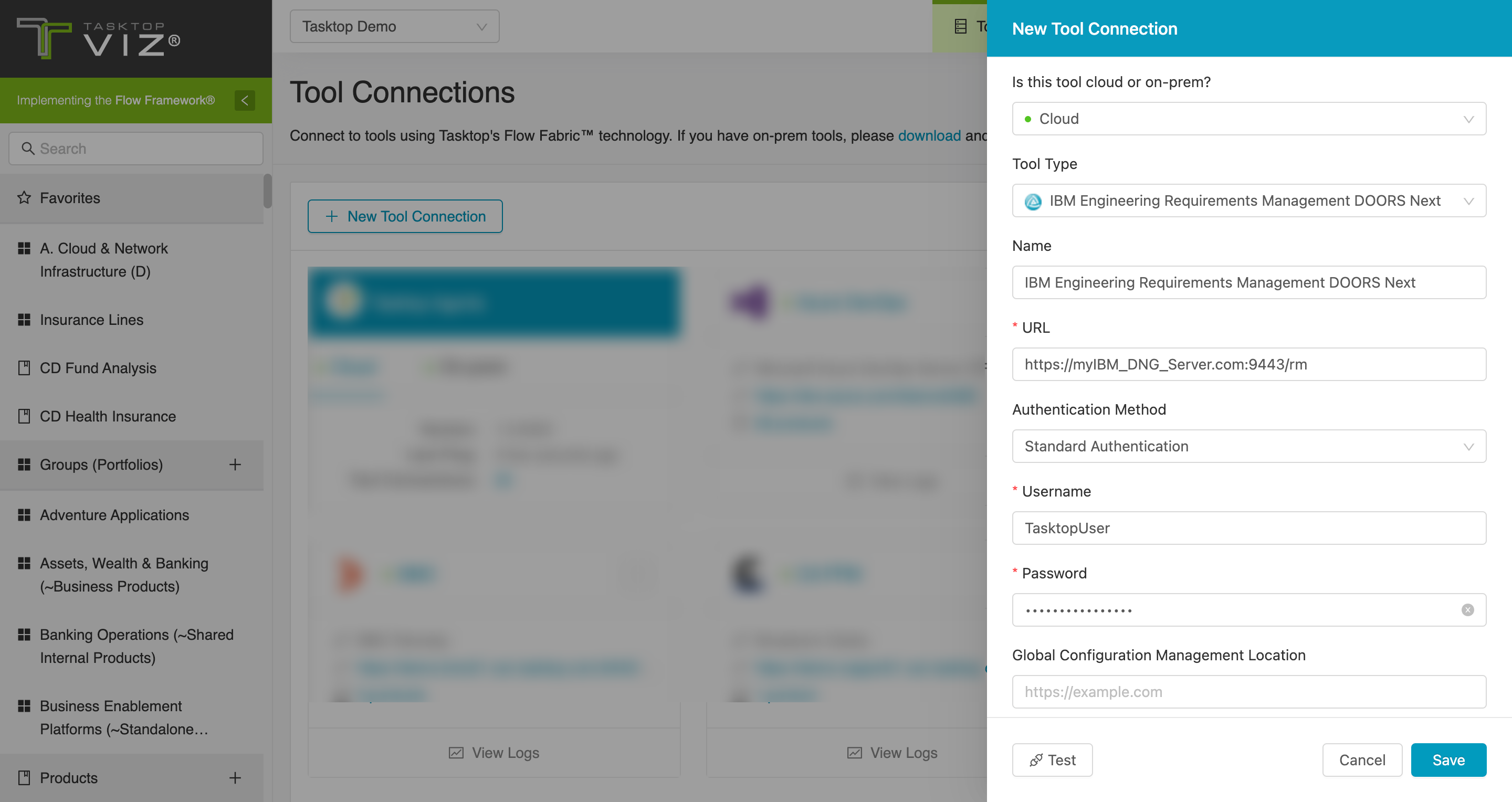IBM Engineering Requirements Management DOORS Next

Overview
IBM Engineering Requirements Management DOORS Next (DOORS Next), formerly known as IBM Rational DOORS Next Generation (DOORS NG), is the requirements tool from IBM that provides support for defining, managing and reporting on requirements.
Connector Setup Details
This section describes the basic steps needed to prepare your IBM Engineering Requirements Management DOORS Next (DOORS Next) instance for use with Viz.
Minimal User Permissions & Viz User
We recommend that you create a new user within your external tool, to be used only for Viz. This is the user information you will enter when setting up your tool connection within Planview Viz. By creating a new user, you will ensure that the correct permissions are granted.
In general, your user account should have sufficient permissions to read artifacts in your tool.
Your user should have a secure password or token. Please be aware that Viz will not allow you to save a tool connection utilizing a weak password/token, such as 'tasktop.'
See here for general help and here for specific license management.
List of minimal user permissions:
- Select Rational DOORS Next Generation - Analyst under Client Access Licenses

- The user will also need to be added as a member of the projects to be used, with the correct roles that allow for reading requirements.
Connecting to the IBM DOORS Next Repository
Standard Authentication
Required Fields:
- Location/Connection URL
- Example Format: https://myIBM_DNG_Server.com:9443/rm
- Username
- Password
Optional Fields:
- Global Configuration Management Location:
- Add the Global Configuration application URL, if using Configuration Management
- Example Format: https://myIBM_GC_Server.com:9443/gc

Supported Artifacts
Supported Work Items
|
Supported Work Item Type |
Applicable Repository Versions |
Unique URL? |
|---|---|---|
|
Requirement |
Any supported repository version: |
Yes |
Supported Containers
|
Containers that can be modeled as Flow Items |
Applicable Repository Versions |
Unique URL? |
|---|---|---|
| N/A | ||
|
Containers used to define which artifacts are included in an Artifact Set |
||
|
Projects |
Any supported repository version: |
N/A |
Supported Field Types
Planview Viz supports configuring rule-based modeling (i.e., conditional modeling) using the field types shown below.
Note: If one field of a given type is supported, others that are also that type in theory should also work. However, sometimes there are instances in which this is not the case due to the repository. So, while we can claim support for fields at the type level, there is a chance that some specific fields of a given type will not function properly.
|
Standard Field Type |
How is field type referenced in the repository? |
Sample Repository Fields Supported |
Particular Repository Fields NOT Supported |
|---|---|---|---|
|
|
String |
Revision Resource ID Formatted ID Summary Description |
|
|
|
Single Select |
Priority Severity Type Requirement Context Category Risk Status Priority |
|
|
|
Integer/Value |
|
|
|
|
Boolean |
|
|
Functional Limitations
|
Category |
Limitation |
Applicable Repository Versions |
|---|---|---|
|
Configuration Requirement |
Custom Field URI Custom field URI's must not end with any of the following text: tasktopProject, type, artifactFormatCategory, requirementContext, resourceID, uri, $resourceUri, ETag, configuration, component. If any of the above text is used, you will encounter errors when creating artifact sets in Viz. |
Any supported repository version: |
|
Good to Know |
Artifact Type The 'Artifact Type' field is a sub-type of the 'Type' field. |
Any supported repository version: |
|
Configuration Requirement |
Artifact Type An artifact type will only appear on the Categorize Artifacts tab if the first artifact encountered when searching a project has an DOORS Next workflow assigned to it. |
Any supported repository version: |